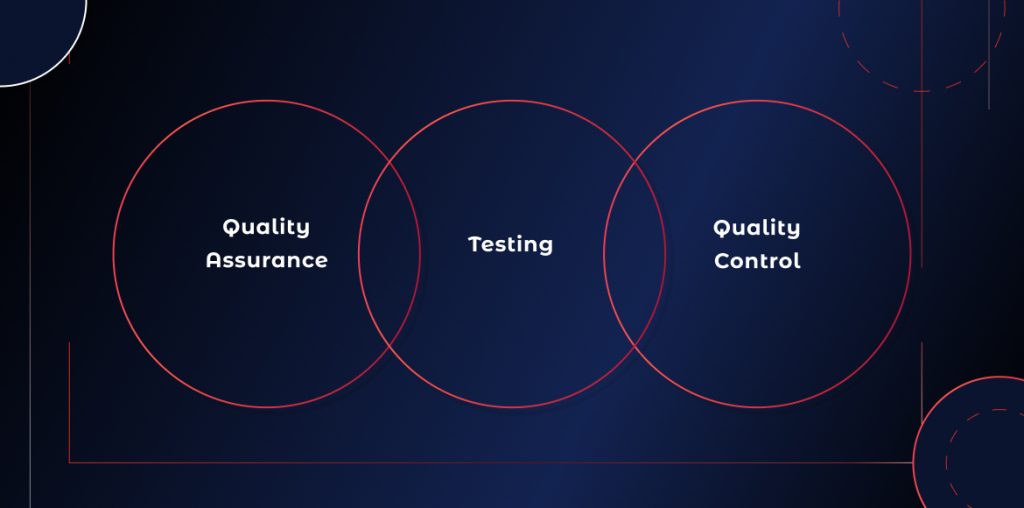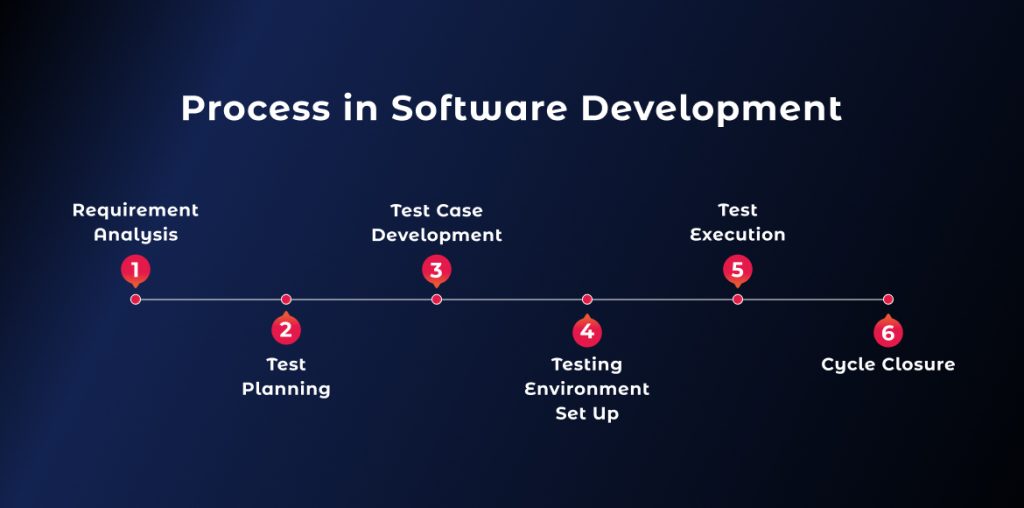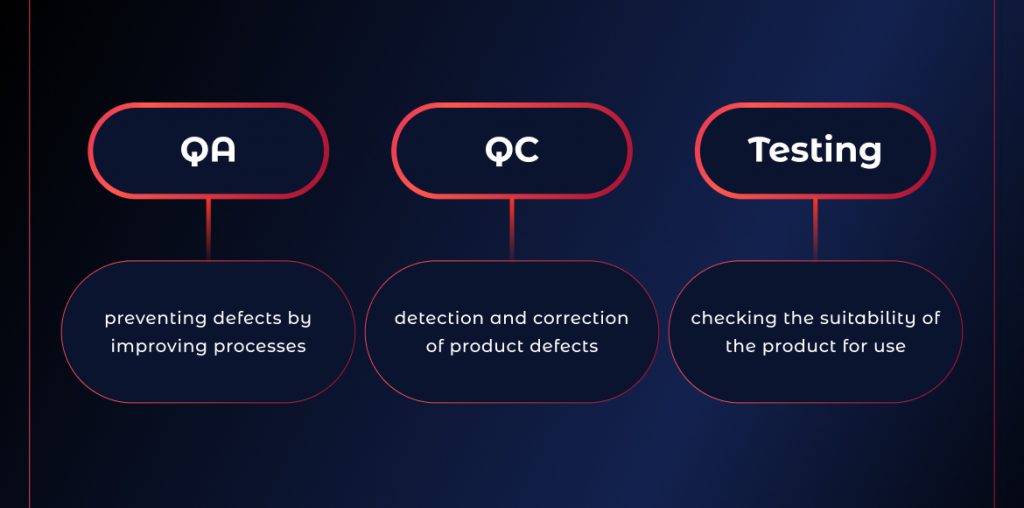Contents
Quality Assurance, Quality Control, and Testing — the Basics of Software Quality Management
The competitive landscape of software development underscores the importance of software quality management. This cornerstone of high-quality software is built on the triad of Quality Assurance (QA), Quality Control (QC), and Testing.

Demystifying Quality Assurance
Quality Assurance, known in short as QA, is the starting point of the quality journey. It is a proactive strategy that embeds quality into the product from the beginning rather than inspecting it in later.QA is pivotal in software development as it sets the standard of quality that the product is expected to achieve. This encompasses everything from initial requirements definition and software design to coding, change management, and release management.

An effective QA program comprises a detailed plan with clear objectives and methods, standardized procedures, documentation guidelines, and a system of regular audits and reviews.
Exploring Quality Control
On the other hand, Quality Control (QC) is about managing quality by identifying and rectifying defects. Contrary to QA, QC is a reactive process that emphasizes finding and fixing errors after they have happened.
QC plays a crucial role in software development. It ensures that the final product is error-free and functions as intended through meticulous testing and review processes.
A comprehensive QC program includes well-established testing procedures, efficient fault detection mechanisms, and corrective measures for identified defects.
The Essential Task of Testing
Testing is the method of running a system or application under controlled conditions and evaluating the results. The goal is to find defects and confirm that the system operates as expected.
Testing is a vital part of software development. It reveals bugs and issues, ensuring that the final product aligns with user requirements and functions correctly. Different types of testing, such as unit testing, integration testing, and system testing, each play crucial roles within the software development life cycle.
The Interplay of QA, QC, and Testing
QA, QC, and Testing are interconnected processes that reinforce each other in the software development ecosystem. While QA aims at defect prevention by refining processes, QC identifies and rectifies product defects, and testing validates the product for use.
In the real-world software development scenarios, these concepts are applied throughout the development lifecycle. For instance, QA practices during the design phase would include design reviews to ensure it meets all requirements and standards. Concurrently, QC practices would involve source code reviews and tests to identify any defects.

Conclusion
In conclusion, understanding the intricacies and roles of Quality Assurance, Quality Control, and Testing is crucial for effective software quality management. They are not mere industry jargon but powerful strategies that ensure the delivery of a reliable and high-performing product. It’s time to incorporate these concepts into your software development processes to elevate your software quality standards.


